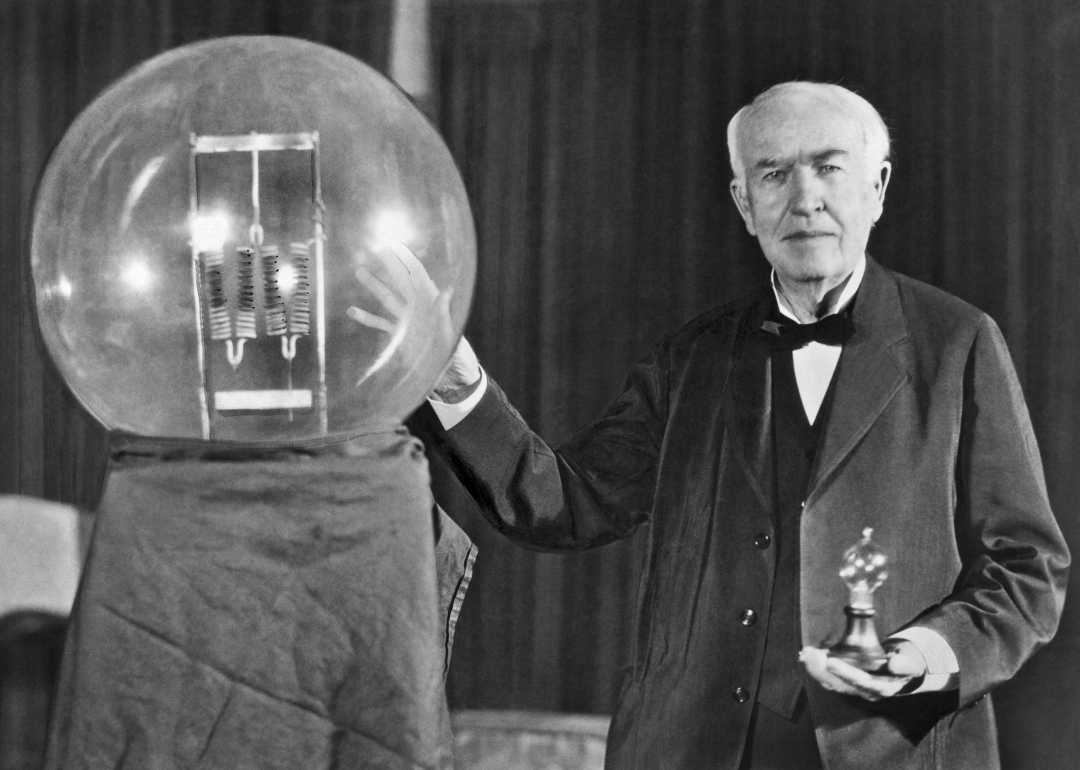
Who actually invented the lightbulb—and the illuminating history of modern lighting
This story originally appeared on LED Lighting Supply and was produced and distributed in partnership with Stacker Studio.
Who actually invented the lightbulb—and the illuminating history of modern lighting
The story of humans trying to use light and heat to their benefit goes back to prehistoric times. The earliest use of fire for these purposes led to torches, oil lamps, candles, gas systems, and finally, lightbulbs. Up until the early years of the 19th century, electrical lighting technology was scant. Soon after, scientists and inventors were fixated on successfully controlling electricity in order to provide a continuous flow of illumination and energy.
Old and new lightbulbs may look similar, but they actually have very little in common. Incandescent and fluorescent lights brightened homes, offices, businesses, and streets for most of the 20th century. However, light-emitting diode technology—simply referred to as LED—has steadily taken over in the last two decades. Valued at just over $78 billion in 2020, the global LED lighting market is forecasted to be worth more than $192 billion by 2030 in its drive toward ubiquity.
In 2020, 57% of the LED lighting market share belonged to light fixtures, which are used in industrial and commercial settings; however, LED popularity has also grown significantly for residential use. Latest estimates from the Energy Information Administration show almost half of U.S. households use LED bulbs for the majority of their indoor lighting. This growth is attributed to the rising usage of LED A-type lamps due to low prices, available clean energy subsidies provided by agencies and governments, and their "plug-and-play" design, which does not require the rewiring of existing electricity sources.
LED Lighting Supply looked at the history of electric lighting, from early incandescent lightbulbs to LED technology. Scroll down and be dazzled by the illuminating history of modern lighting, and find out—once and for all—if Thomas Edison did indeed invent the incandescent lightbulb.
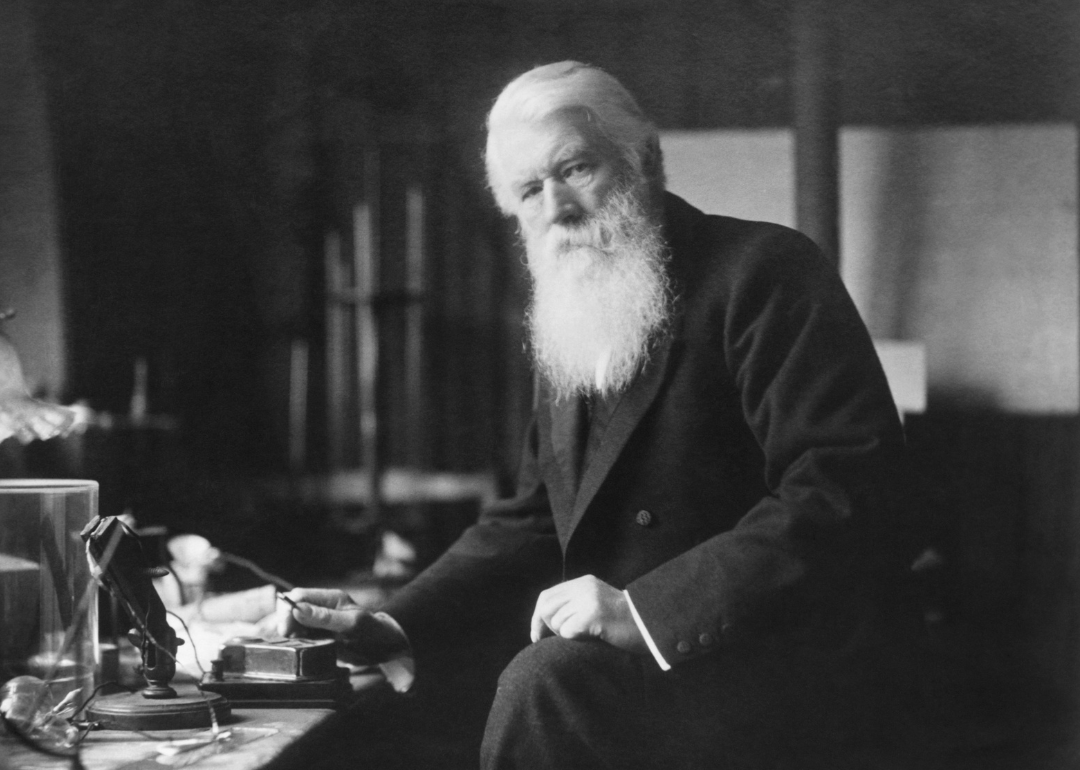
1830s: Inventors create early, short-lived incandescent bulbs
Around 20 different early versions of lightbulbs were developed before Edison patented his invention in 1879. In Scotland, 44 years earlier, James Bowman Lindsay made a public demonstration of how a constant electric light worked. Some historians credit him as the inventor of the incandescent lightbulb. Nonetheless, other relatively successful experiments go as far back as 1809, when British chemist Humphry Davy invented the first electric arc lamp.
Other researchers that achieved some level of success with their experiments were Americans William Sawyer and Albon Man and British inventor Joseph Swan, all of whom sued Thomas Edison for patent infringement, but eventually ended up settling and partnering with him to found both General Electric in the U.S. and Ediswan in the U.K.
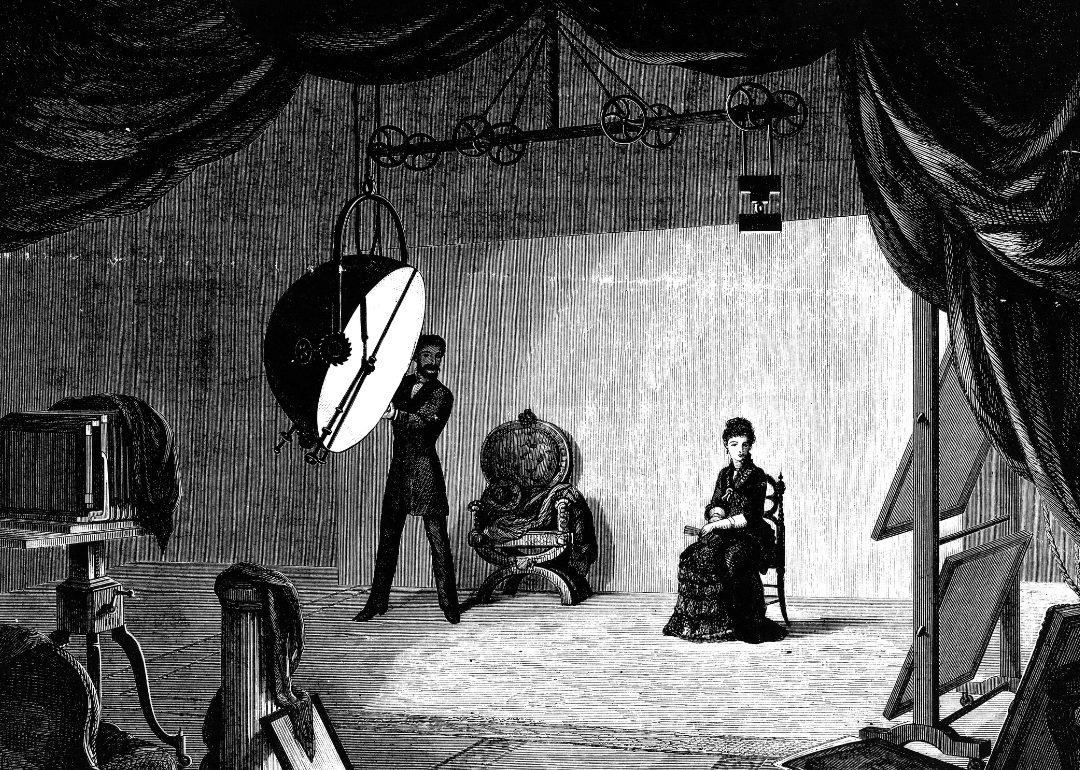
1850s: Arc lights capitalize on advances in electricity
Arc lamps were expensive to operate, and the glow fluctuated so much that they proved to be impractical for most settings. They needed to be powered by generators since even the largest batteries depleted too quickly. Commercial generators were available around 1844, and by 1860, lighthouses in France and England used arc lights powered by electric dynamo machines.
Once it was evident that arc lamps were not suitable for indoor illumination, European researchers teamed up to create some of the first arc lamp outdoor lighting systems. Arc lighting debuted in two places in France in 1875: at the La Chapelle railway station, believed to be the first street-level arc lamp use, and at the Mill of Heilmann, Ducommun, and Steinlein. It later found its way to London, where in 1878 arc lamps were used to light the Thames Embankment. Similar systems were soon developed thereafter in the U.S.
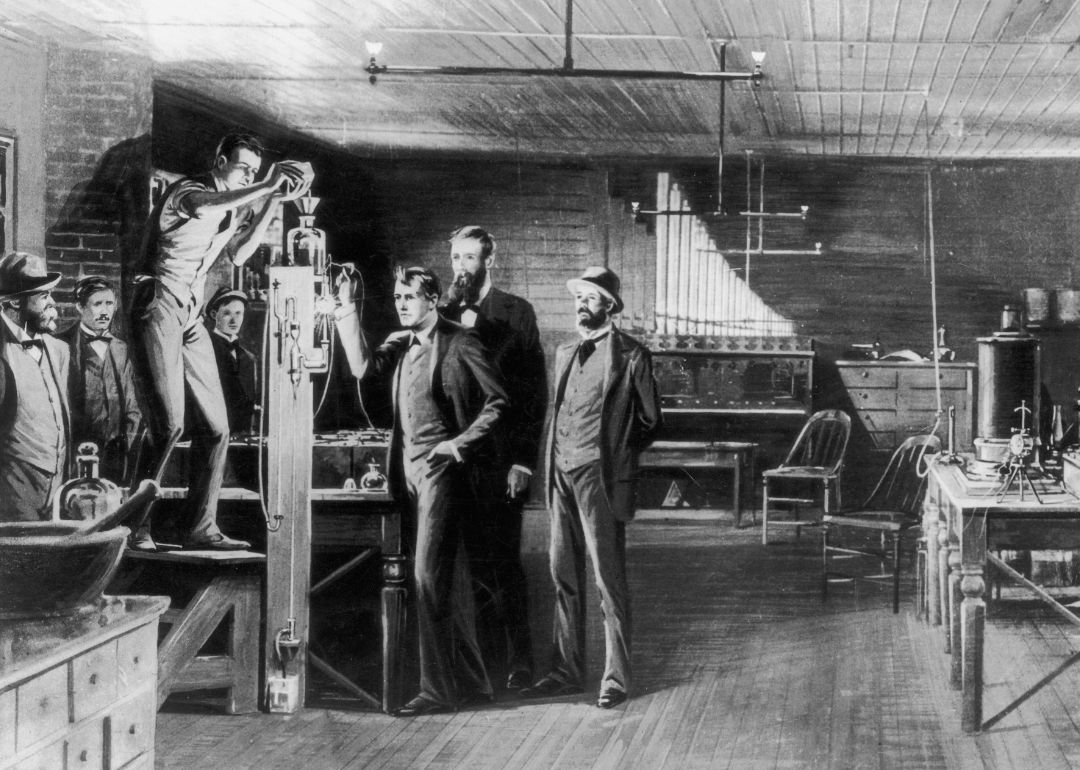
1880s: First incandescent lightbulbs made commercially
It is true that several other scientists were experimenting with lightbulbs before or at the same time as Thomas Edison. It is also true that he was the first one to discover which type of carbonized material would provide constant light inside glass balloons without burning out or overheating. After trying literally thousands of different filament sources—from expensive metals to human hair—he found the perfect one: bamboo.
Edison was more than a scientist; he was also a visionary businessman. From the beginning of his research, he focused on an entire lighting system. In the early 1880s, he supervised (from his own plans) the construction of the earliest commercial, central electric power station in New York City and thereafter established a laboratory in New Jersey, where he would work for the rest of his life.
His commercial ambitions also influenced others. In 1879, the same year Edison patented his version of the lightbulb, inventor Charles Brush showed the capacity of his own system by lighting Cleveland's Public Square. Fast-forward two years and working lighting systems brightened the streets of New York, Boston, Philadelphia, Montreal, Buffalo, and San Francisco.
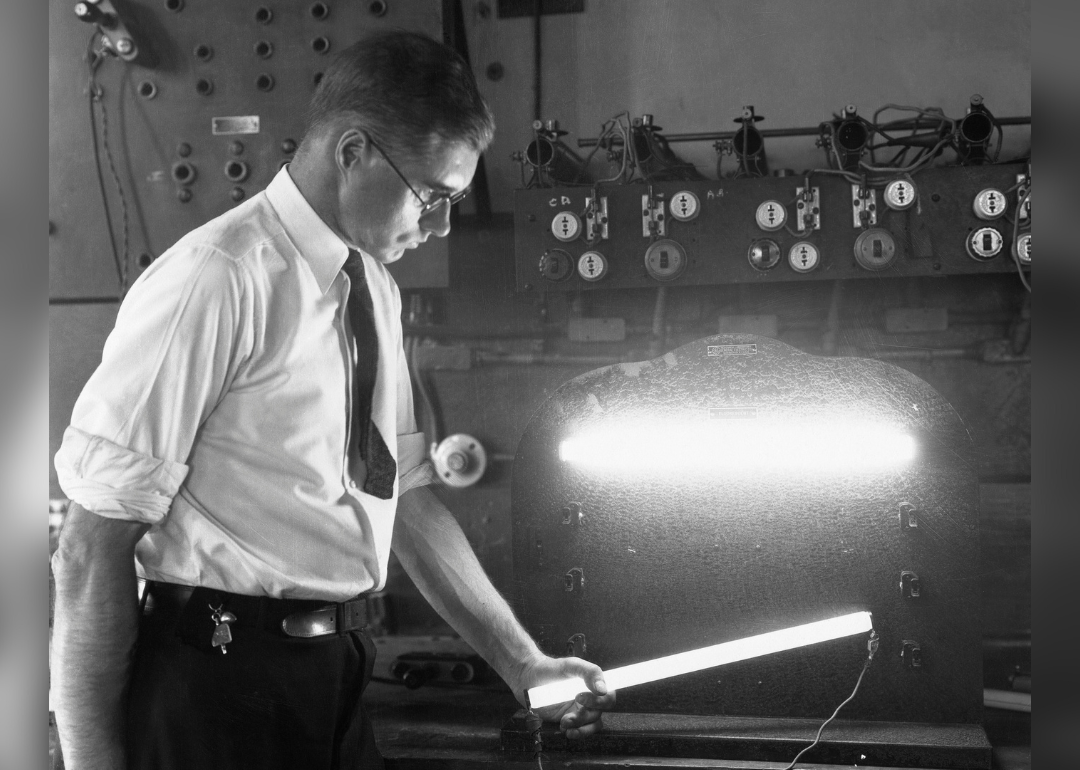
1900s: Peter Cooper Hewitt creates early fluorescent lamp
In 1901, Peter Cooper Hewitt passed an electric current through a glass tube with mercury vapor. However, the bluish-green light radiated was unsuitable for home or public illumination. Three decades later, European researchers experimented with phosphors-coated neon tubes, motivating their American colleagues to study further. Eventually, white light radiated from the tubular lamps.
In 1939, General Electric and Westinghouse introduced fluorescent lamps. Their popularity grew rapidly, and by 1951 more light in the U.S. was produced by linear fluorescent lamps than incandescent bulbs. Twenty-five years later, after already pioneering the Watt-Miser energy-efficient fluorescent lamp, Edward Hammer figured out how to bend the tubes, resulting in the first compact fluorescent light.
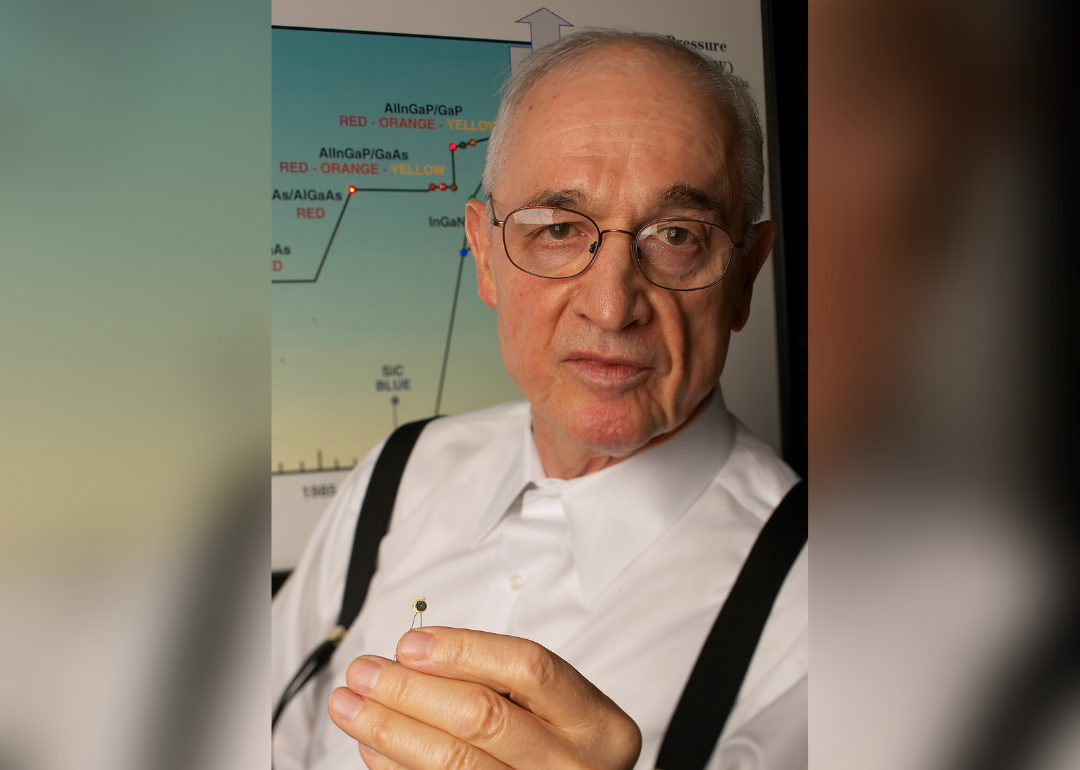
1960s: Nick Holonyak Jr. invents first LED light
While working as a scientific advisor for General Electric, engineer Nick Holonyak Jr. invented the first visible spectrum red LED in 1962. At first, it was used in simple electronic devices, such as digital alarm clocks, watches, and screen displays. Green and yellow LED came later. LEDs are components of electrical circuits that produce light. They are composed of small chips of semiconductors, which are able to conduct electricity, or as Holonyak once said, "the current itself is the light."
Holonyak was a prolific inventor, who held 41 patents under his name, including the lasers that activated DVD and CD players.
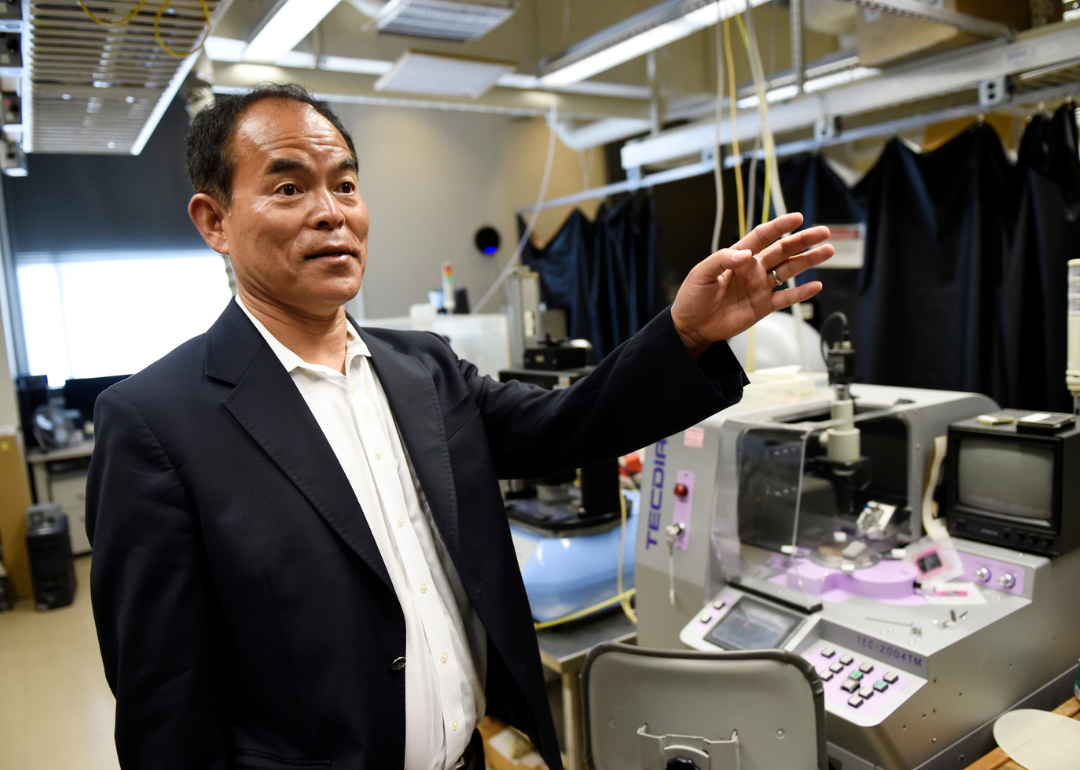
2014: Three scientists receive Nobel Prize in physics for inventing "efficient blue light-emitting diodes"
A major breakthrough in LED technology was the invention of bright blue LED by Isamu Akasaki, Hiroshi Amano, and Shuji Nakamura, which earned them the 2014 Nobel Prize in Physics. It was a technical victory because it cleared the path for the creation of the highly efficient and environmentally friendly white LED, a wide spectrum light with a lengthy list of practical applications.
Besides forging the path toward white LED development, blue LEDs light up the screens of televisions, computers, mobile phones, and tablets. As yet, white LED lightbulbs are not the predominant bulb used in residential lighting in the U.S.—despite proving to save consumers money on electric bills—but their market share is growing.



